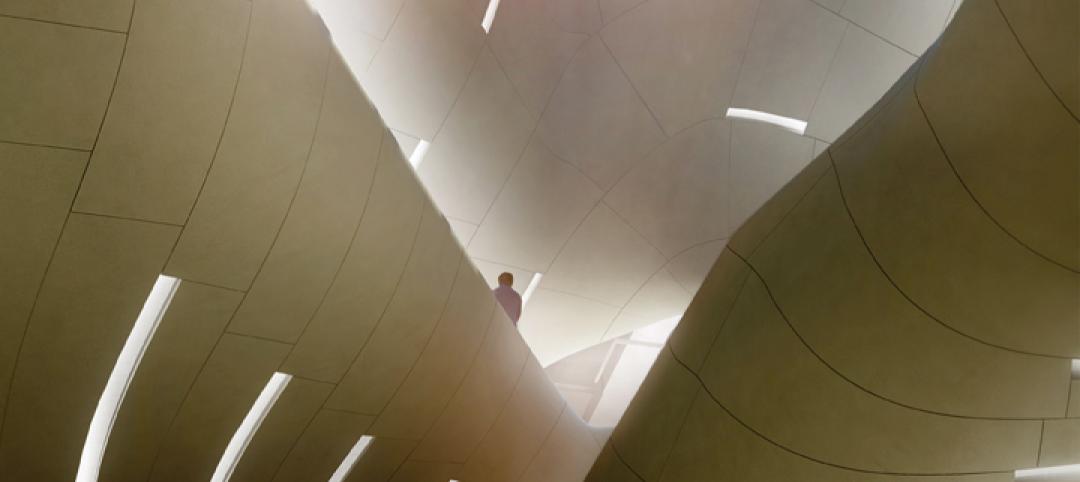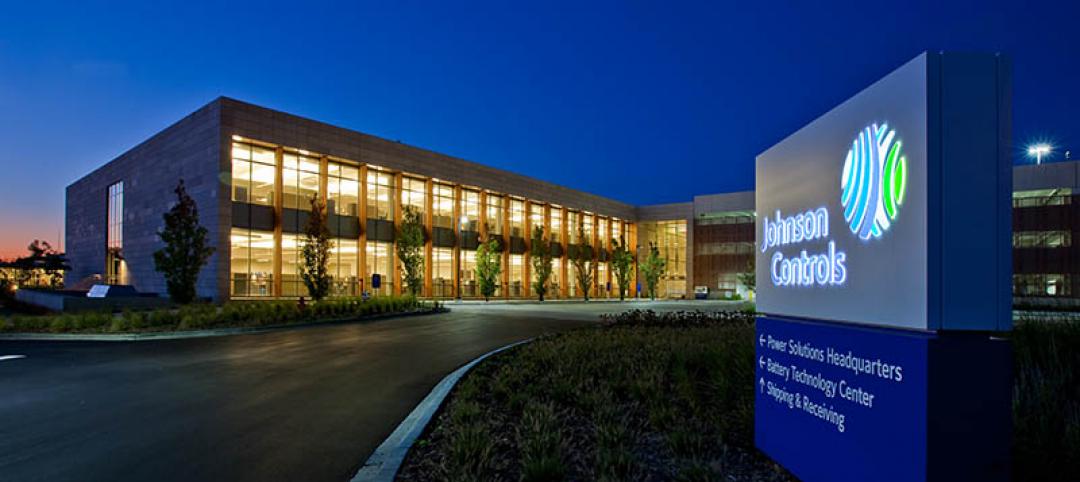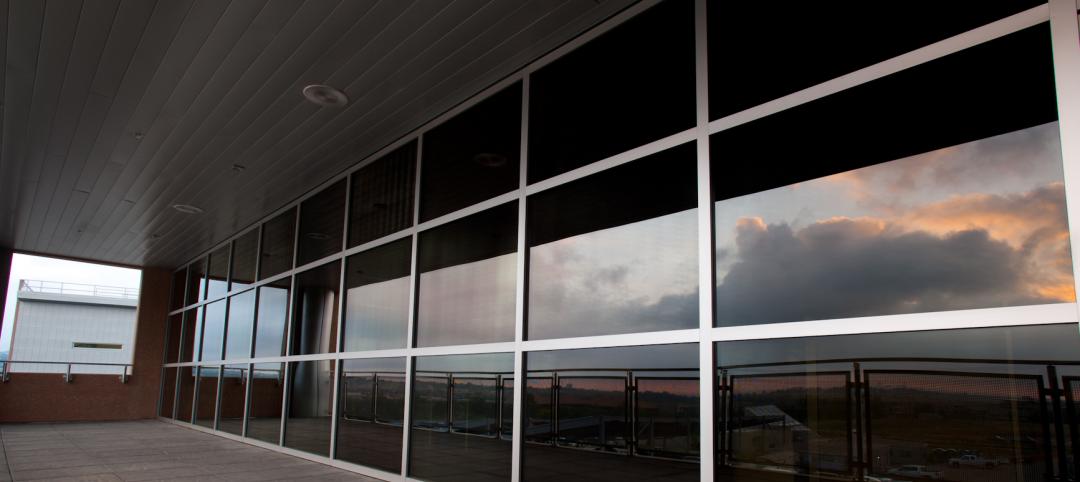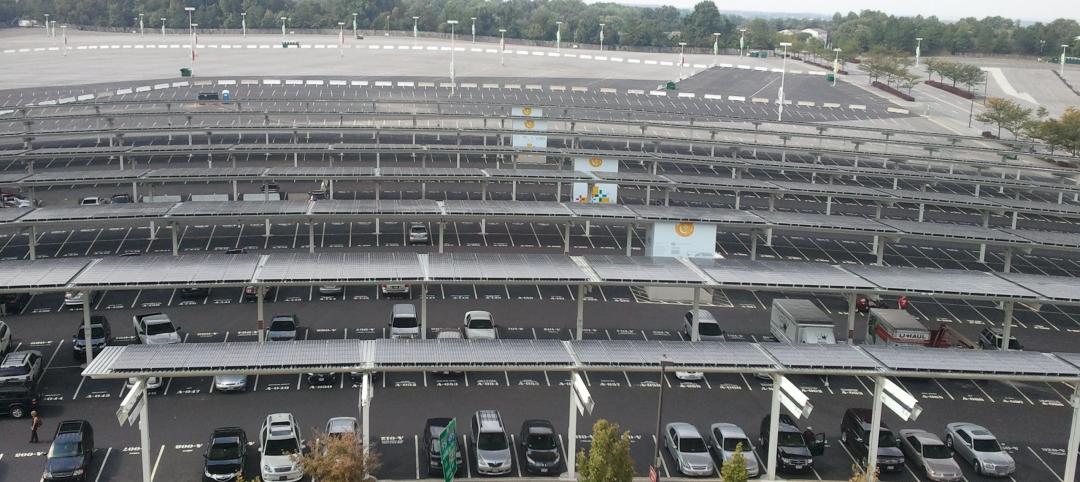 |
| Only 20 geothermal boreholes were drilled at the WestJet complex because a majority of the piping was embedded in the building’s structural piles. |
19. Hybrid Geothermal Technology
 |
20. Kinetic Road Plates Power Purchases
 |
| Graduate student Shawn Shields checks server performance while Dr. Yogendra Joshi looks on at Georgia Tech’s simulated data center. |
21. Cutting the Cooling Load of Data Centers by 15%
Researchers at the Georgia Institute of Technology, Atlanta, are using a 1,100-sf simulated data center to develop and evaluate new ways of controlling heat in commercial data centers, one of the fastest-growing building types in the country. The researchers, led by Professor Yogendra Joshi of the Woodruff School of Mechanical Engineering, have found ways to cut energy center cooling costs 15% by rearranging servers and space for optimal airflow patterns. Their simulated data center uses several different cooling systems, partitions to change room air volumes, sophisticated thermometers attached directly to a server's motherboard, and both real and simulated airflow sensors to measure the output of fans and other systems. The research is sponsored by the U.S. Office of Naval Research and the Consortium for Energy Efficient Thermal Management.
Related Stories
| Oct 17, 2011
Schneider Electric introduces UL924 emergency lighting control devices
The emergency lighting control devices require fewer maintenance costs and testing requirements than backup batteries because they comply with the UL924 standard, reducing installation time.
| Oct 14, 2011
AISC develops new interoperability strategy to move construction industry forward
AISC is working to bring that vision to reality by developing a three-step interoperability strategy to evaluate data exchanges and integrate structural steel information into buildingSMART's Industry Foundation Classes.
| Oct 12, 2011
BIM Clarification and Codification in a Louisiana Sports Museum
The Louisiana State Sports Hall of Fame celebrates the sporting past, but it took innovative 3D planning and coordination of the future to deliver its contemporary design.
| Oct 11, 2011
Pink light bulbs donated to Society of Memorial Sloan-Kettering Cancer Center
For every Bulbrite Pink Light Bulb that is purchased through the Cancer Center Thrift Shop, 100% of the proceeds will be donated to help support breast cancer research, education, screening, and treatment.
| Oct 7, 2011
GREENBUILD 2011: Otis Elevator announces new contracts for sustainable building projects
Wins reinforce Otis’ position as leader in energy-efficient products.
| Oct 7, 2011
GREENBUILD 2011: Schools program receives grant to track student conservation results
To track results, schools will use the newly developed Sustainability Dashboard, a unique web-based service that makes tracking sustainability initiatives affordable and easy.
| Oct 5, 2011
GREENBUILD 2011: Johnson Controls announces Panoptix, a new approach to building efficiency
Panoptix combines latest technology, new business model and industry-leading expertise to make building efficiency easier and more accessible to a broader market.
| Oct 4, 2011
GREENBUILD 2011
Click here for the latest news and products from Greenbuild 2011, Oct. 4-7, in Toronto.
| Sep 23, 2011
Smart windows installed at NREL
The self-tinting heat-activated filter allows solar heat into the building when it is desired, such as on a sunny winter day.
| Sep 16, 2011
Largest solar installation completed at Redskins' football stadium
On game days, solar power can provide up to 20% of FedExField’s power.
















